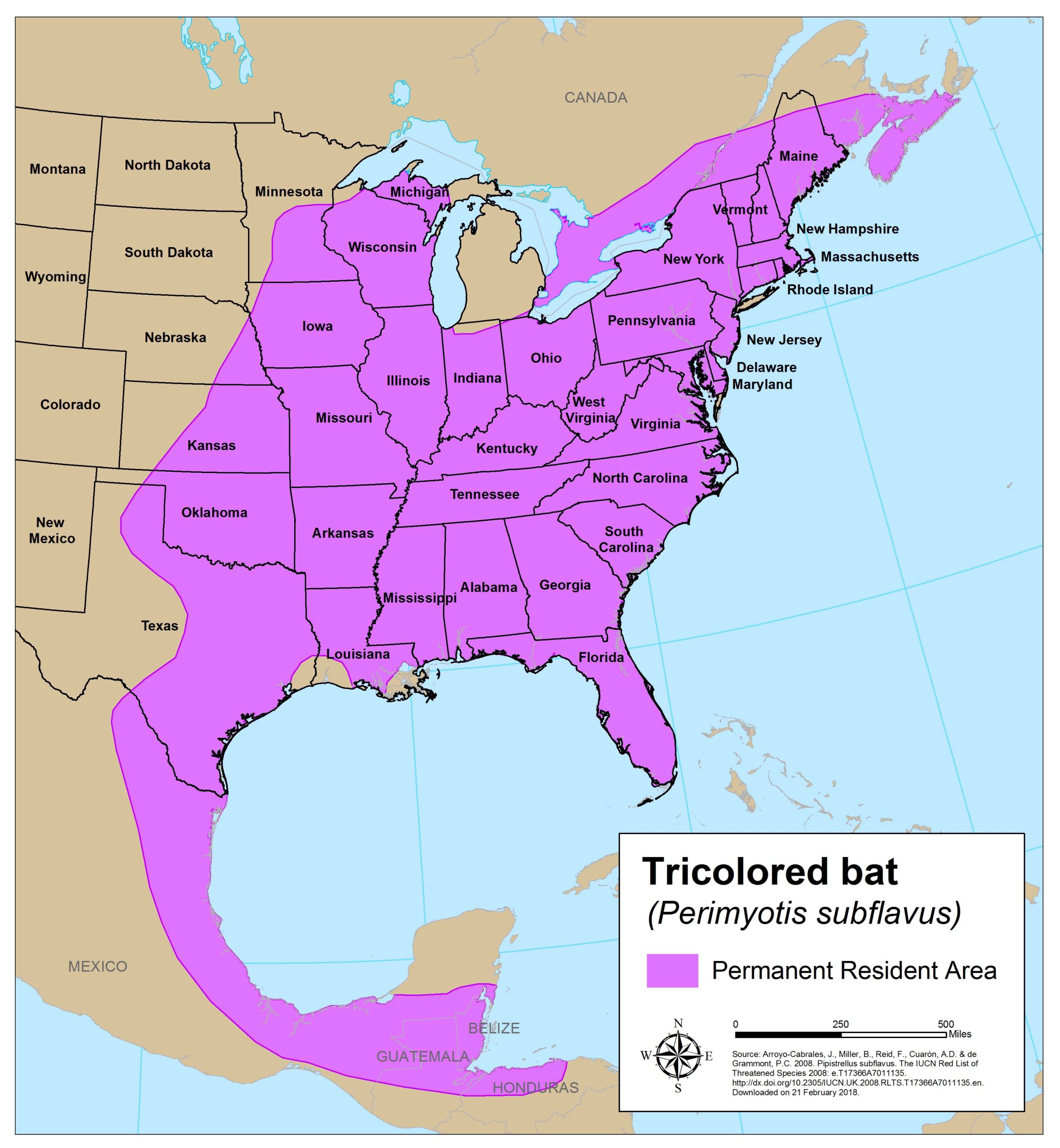On September 14, 2022, the U.S. Fish and Wildlife Service (USFWS) published a proposed rule listing the tricolored bat (Perimyotis subflavus) as endangered throughout its range. The proposed rule comes on the heels of the proposed up-listing of the northern long-eared bat (Myotis septentrionalis) from threatened to endangered, published earlier this year (March article, April article), and due as a final rule this November. A final rule for the tricolored bat is expected in 2023.
Similar to the northern long-eared bat, the tricolored bat has a large range, having been historically found in 39 states (including Delaware, Maryland, West Virginia, and Virginia), and the District of Columbia. During the winter months, it hibernates in caves and abandoned mines, but during the late spring, summer, and early fall it disperses to forested habitats throughout its range. The tricolored bat was already listed as endangered in Virginia.
Of critical importance, the proposed rule notes that At this time, we are unable to identify specific activities that would not be considered to result in a violation of section 9 of the Act because the tricolored bat occurs in a variety of habitat conditions across its range and it is likely that site-specific conservation measures may be needed for activities that may directly or indirectly affect the species.
Thus, activities that may require coordination and approval from USFWS include (as relevant to our readers): (2) Disturbance or destruction (or otherwise making unsuitable) of known hibernacula due to commercial or recreational activities during known periods of hibernation. (3) Unauthorized destruction or modification of suitable forested habitat (including unauthorized grading, leveling, burning, herbicide spraying, o other destruction or modification of habitat) in ways that kill or injure individuals by significantly impairing the species’ essential breeding, foraging, sheltering, commuting, or other essential life functions. (4) Unauthorized removal or destruction of trees and other natural and manmade structures being used as roosts by the tricolored bat that results in take of the species.

